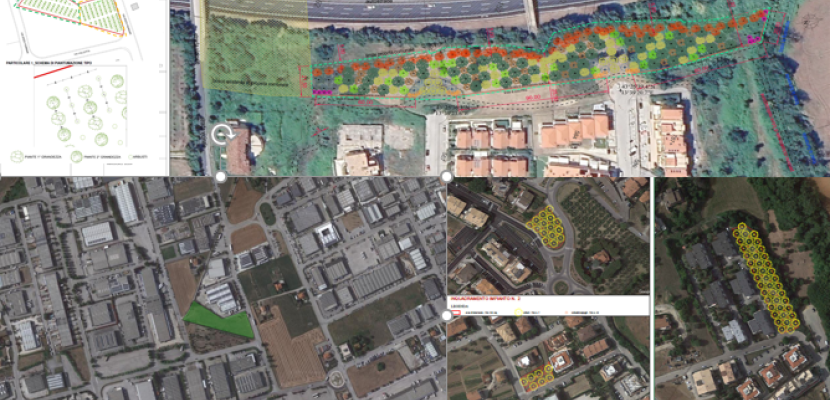
Urban wood and micro-urban forestation for air quality and carbon absorption

About this good practice
Urban areas, for greater human pressure and concentration of emission sources, have high concentration of air pollutants. For this the Marche Region and the Ministry of the Environment signed an Agreement on air quality to respect limit value and protecting human health (COM(2022) 542). The Agreement has resources for 5 M€ and includes different measures, from traffic to awarness. Between measures are the increase in the presence trees in urban areas, for their potentiality reduction of pollutants. Dedicated resources for urban forestry were make available to municipalities through an open call.
The call allows two type of interventions: Type A is forest and Type B Urban Microforestry.
For the Italian legislation a wood is forest if it has a surface at least of 2000 m2 and minimum width of 20 m. Since the Type A is possible only where enough land is available (and this is not the case of cities, especially big cities where problems of air quality are greater) the type B “Urban microforestry” was included in the call. Urban microforestry refers to interventions that have a minimum total surface of 2000 m2, as sum of multiple interventions of at least 100 m2. The idea is to fulfil the empty space inside cities with forest. All the municipality of Marche with a population of more than 10.000 inhabitants were allowed to participate to the call. Priority was given to municipality with problem on air quality. All citizens could benefit from the realization of the projects.
Resources needed
The call was funded with 1.700.000 € from the Agreement between the Ministry of the Environment and Energy Security and the Marche Region on the improvement of air pollution. The call gave priority to municipalities which co-finance projects for at least the 10%
Evidence of success
9 projects are financed, for an overall surface of more than 15 ha inside urban area. The experience has tested the feasibility and the efficacy of «urban woods» approach as opportunity to find space for “green” inside cities. In addition, since one of the admissibility conditions was that the land had to be free of vegetation, each intervention represents a new carbon sink. According to a first rough estimation the carbon sink at 20 year is 720 tonnes C corresponding to 2640 tonnes CO2
Potential for learning or transfer
The presence of green in urban areas is universally recognised as important for several aspects: from simple recreation to climate regulation to CO2 and pollutants reduction. This experience demonstrates that it is possible to maximize the positive effects of green space with an ecological approach, creating forest ecosystems and not simple urban parks. In addition, the micro forestry approach allows to find space for woods inside more critical areas, where usually parks or woods are not created.
Good practice owner
You can contact the good practice owner below for more detailed information.